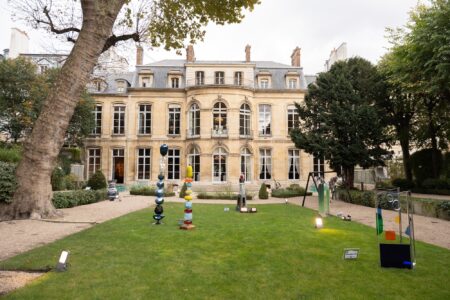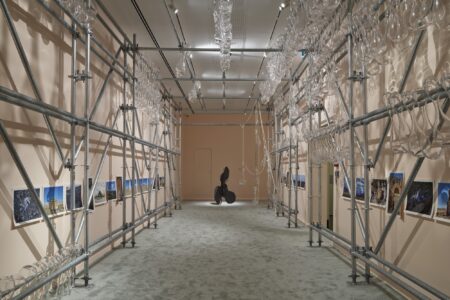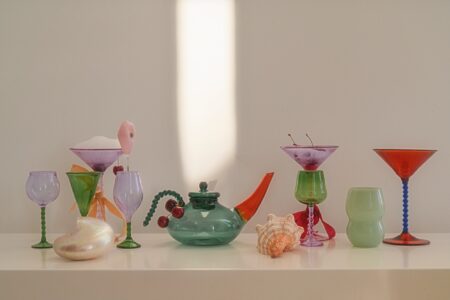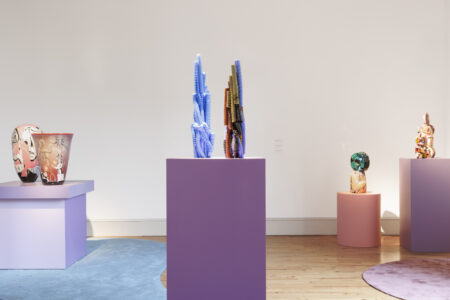GLASS IS TOMORROW II – WORKSHOP #3 – 19>23 May 2014
The second phase : GIT II started in June 2013 (and will last until 31 May 2015), it will aim at collaborating further with high end glass centers and postgraduate education departments specialized into glass design, in order to increase the quality of the glass production in Europe and the awareness of the European glass culture, tradition and innovations towards the professional world and the general public (including the applied arts and design collectors). The evolution of the project will enhance both the pedagogy and the profession of glass design and making.
There are 2 professional production residencies at the partners’ glass factories (The Glass Factory in Boda – SE and the CIAV in Meisenthal – FR), wich have already been organized and in parallel to a future serie of 3 postgraduate workshops along with specialized schools ‘departments glass and ceramics) and glass research centers (ESADSE – School of High Education in Art and Design of Saint-Etienne, Royal College of Arts – RCA in London, and CIRECA/Domaine de Boisbuchet with the Corning Glass Museum/”Glass Lab” from New York City, US).
// UPCOMING EVENT //
THE THIRD WORKSHOP OF GIT II WILL TAKE PLACE AT THE SAINT-JUST GLASSWORKS FROM 19 TO 23 MAY 2014
THEME: ‘INSIDE OUTSIDE’
The Saint-Just Glassworks has an expertise that is unique in the world. A French “Living Heritage Company” (EPV), located in Saint-Just-Saint-Rambert since 1826, the Saint-Just Glassworks was originally a stained glass manufacturing plant. Since 1865 it has specialized in the production of hand-blown glass for making architectural flat glass. It has used the same technique since the 19th century.
In particular, the company produces colored glass for most of the stained glass window shops working in heritage restoration. It also supplies clear double-paned windows for historical monuments, thus allying traditional techniques with modern performance. By producing artisanal flat glass from hand-blown glass, the three-dimensional object is transformed into a two-dimensional material ideal for architectural applications. During the workshop, the usual process of transforming the material into an object is reversed: the object becomes the material. The glass thus becomes a material that takes shapes as an object to create a micro-architecture that can be placed inside or outside, at home or in the urban space. With the glass blown and drawn at Saint-Just Glassworks, all possibilities are open to the creativity of the designers and architects.
The designers will work in pairs with the students.
In collaboration with : Verrerie de Saint-Just / Saint-Just Glassworks, ESADSE (Ecole Supérieure d’Art et Design de Saint-Etienne) and La Cité du Design, Saint Etienne
For more informations :
Press Release (EN)
Press Release (FR)
REDISCOVER GIT WORKSHOP IN NUUTAJÄRVI, CZECH FINLAND IN SEPT 2011 :
Video by James BortTheme: Stackability: “Stack-able” is a combination of words that was born in the 1960’s with the evolution of furniture design and domestic use in the home. Stackable is the specific context of GIT, can have several meanings:
– Being “stacked’, like chairs, but applied to glass elements that may be glassware, tableware or utilitarian objects for everyday life.
– Designing and/or glassblowing a product that can be stored and transported as efficiently as possible without damage.
– Being efficient and/or effective in the production process of the glassware by staking elements on one another: add-ons in shape, in function or in colors, introduced at different moments in the glassblowing process.
REDISCOVER GIT WORKSHOP IN NOVY BOR, CZECH REPUBLIC IN FEB 2012 :
Theme: Silvering: Silvered glass (also known as Mercury Glass) is double‐walled glass with a silver coating inside the walls. The silvering liquid is poured into the space between the walls of the glass vessel through an opening, it adheres to the glass wall creating an opaque mirrored surface. The residue is drained off, the inside dried, and some form of seal placed over the opening.
REDISCOVER GIT WORKSHOP AT CIAV, MEISENTHAL IN JULY 2012 :
THE FIRST WORKSHOP OF GLASS IS TOMORROW II IN BODA, SE in JULY 2013 :
THEME: “Mixed Media” : Boda glassworks has been the Swedish glasshouse where the designers went wild and had all the freedom to experiment as they wished in the 1950s, 60´s and 70´, which made the glasshouse flourish more than any other glasshouse in the Swedish Kingdom of Crystal. In Boda a tradition of experimenting with mixed media has long been existing. When the artist and designer Erik Höglund came to the Boda Glasworks in 1953 he paved the way for a young, new generation of designers who started questioning the traditional norm of how glass should look and how it should be designed. In Boda the glass designers worked with wood and metal, combining different materials for a young new clientele by taking into account that the Swedish society had changed dramatically.
In collaboration with The Glass Factory
THE SECOND WORKSHOP OF GIT II AT THE DOMAINE DE BOISBUCHET, FR IN SEPT 2013 :
THEME: “Liquid Fusion” : Architect, designer and tutor Paul Haigh and the GlassLab™ return to Boisbuchet for a glass design exploration workshop focusing on the ephemeral and sublime qualities of glass as a rich palette for innovation and intervention. Emphasis will be placed on the idea of “…glass as a liquid” in exploring a material that can transform process into poetry.
Working with expert glassmakers from the Corning Museum of Glass, the participants will explore and develop individual ideas to fabricate glass concept at multiple scales from fashion to furniture, from artifact to architecture. Each new design will be fabricated through multiple prototypes utilizing the process offered, including pipe blowing, fusing, hand pressing and glass sheet forming. The participants will examine glass making as an art form that offers a multitude of methods appropriate for today’s design tasks.
In collaboration with CIRECA (Centre International de Recherche et d’Education Culturelle et Agricole) with The Corning Museum of Glass and the GlassLab™ tutoring by Paul Haigh.
If you would like to be kept up to date with the project, discover our new glass adventures, follow us on Facebook and on www.glassistomorow.eu
Glass is Tomorrow II is curated by Pro Materia (BE), supported by organizing partners : the Glass Factory (SE), the RCA – Royal College of Art (UK), Domaine de Boisbuchet (FR), Cité du Design (FR), ESADSE – École Supérieure d’Art et Design de Saint-Etienne (FR), CIAV – Centre International d’Art Verrier (FR) and Vessel Gallery (UK). The project enjoys the support of the Culture Programme of the European Union and of its associated partners Saint-Just (FR), Konstfack University (SE), Riksglasskolan (SE) and Örsjö Belysning (SE).





